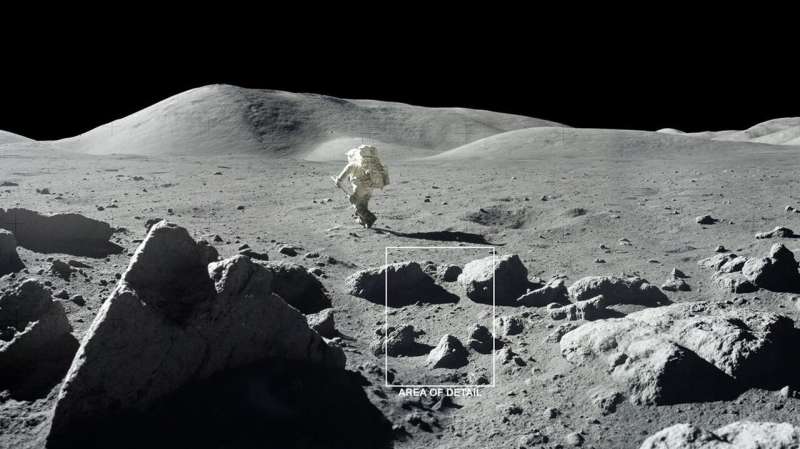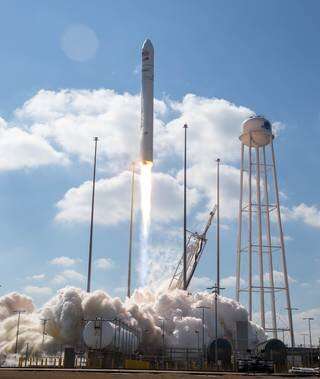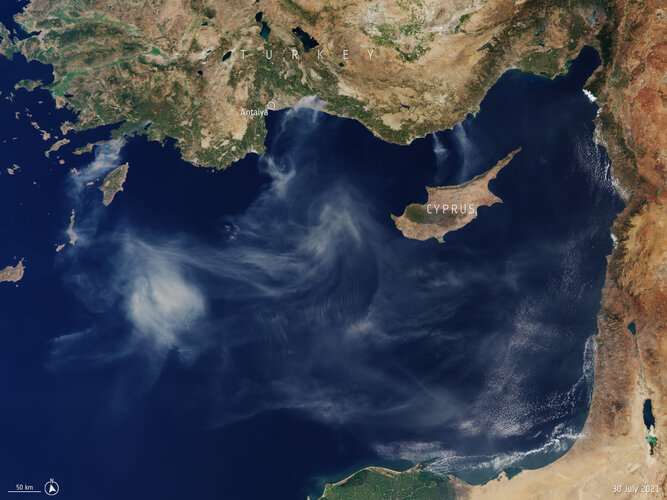
Copernical Team
ISSRDC to highlight opportunities within biomanufacturing in space
 The 2021 International Space Station Research and Development Conference (ISSRDC) will feature a fireside chat on biomanufacturing in space. Gary Rodrigue, director of programs and partnerships at the Center for the Advancement of Science in Space (CASIS), will moderate a discussion with Dr. William Wagner, director of the University of Pittsburgh's McGowan Institute for Regenerative Medicine. T
The 2021 International Space Station Research and Development Conference (ISSRDC) will feature a fireside chat on biomanufacturing in space. Gary Rodrigue, director of programs and partnerships at the Center for the Advancement of Science in Space (CASIS), will moderate a discussion with Dr. William Wagner, director of the University of Pittsburgh's McGowan Institute for Regenerative Medicine. T Kleos establishes partnership with Japan Space Imaging Corporation for promotion in Japan
 Kleos Space S.A. has established a partnership with Japanese based Japan Space Imaging Corporation (JSI) to support Kleos' geolocation data promotion in Japan.
Under the agreement, Kleos' RF geolocation data will enhance Japanese customers in their operations, such as defense of the homeland, and identification of illicit activities in territorial and international waters.
Kleos' Gro
Kleos Space S.A. has established a partnership with Japanese based Japan Space Imaging Corporation (JSI) to support Kleos' geolocation data promotion in Japan.
Under the agreement, Kleos' RF geolocation data will enhance Japanese customers in their operations, such as defense of the homeland, and identification of illicit activities in territorial and international waters.
Kleos' Gro Navy tests MQ-4C unmanned aerial vehicles with upgraded sensors
 An MQ-4C Triton unmanned aerial vehicle equipped with an upgraded multi-intelligence configuration was successfully tested this week, the U.S. Navy announced.
The test is regarded as a milestone in the improvement of the vehicle, the U.S. Navy's premier high-altitude long-endurance, or HALE, maritime intelligence, surveillance and reconnaissance platform, builder Northrop Grumman said i
An MQ-4C Triton unmanned aerial vehicle equipped with an upgraded multi-intelligence configuration was successfully tested this week, the U.S. Navy announced.
The test is regarded as a milestone in the improvement of the vehicle, the U.S. Navy's premier high-altitude long-endurance, or HALE, maritime intelligence, surveillance and reconnaissance platform, builder Northrop Grumman said i Rocket Lab launches US Space Force mission
 Rocket Lab, the leading launch provider and space systems company, has successfully launched a research and development satellite to orbit for the United States Space Force (USSF). The mission was Rocket Lab's fourth launch for the year and its 21st Electron mission overall.
The mission, named 'It's a Little Chile Up Here', launched from Rocket Lab Launch Complex 1 on New Zealand's Mahia P
Rocket Lab, the leading launch provider and space systems company, has successfully launched a research and development satellite to orbit for the United States Space Force (USSF). The mission was Rocket Lab's fourth launch for the year and its 21st Electron mission overall.
The mission, named 'It's a Little Chile Up Here', launched from Rocket Lab Launch Complex 1 on New Zealand's Mahia P Nauka Module incident caused by software failure
 The sudden activation of engines of Russia's Nauka multipurpose laboratory module at the International Space Station (ISS) was triggered by a software failure that was quickly fixed, Russia's ISS segment chief, Vladimir Solovyov, explained on Friday.
"The mechanic aspect of the docking was reliable, without any remarks registered. This resulted in the closure of both docking mechanisms: th
The sudden activation of engines of Russia's Nauka multipurpose laboratory module at the International Space Station (ISS) was triggered by a software failure that was quickly fixed, Russia's ISS segment chief, Vladimir Solovyov, explained on Friday.
"The mechanic aspect of the docking was reliable, without any remarks registered. This resulted in the closure of both docking mechanisms: th Boeing attempts uncrewed test flight to ISS a second time
 Boeing will be aiming to get its spaceflight program back on track Tuesday with an uncrewed flight of its Starliner capsule to the International Space Station (ISS), after its last such test in 2019 ended in failure.
The spaceship is due to launch on an Atlas V rocket built by the United Launch Alliance from Cape Canaveral Space Force Station in Florida at 1:20 pm Eastern time (1720 GMT).
Boeing will be aiming to get its spaceflight program back on track Tuesday with an uncrewed flight of its Starliner capsule to the International Space Station (ISS), after its last such test in 2019 ended in failure.
The spaceship is due to launch on an Atlas V rocket built by the United Launch Alliance from Cape Canaveral Space Force Station in Florida at 1:20 pm Eastern time (1720 GMT). Russia to stop using ISS by 2028, create own National Space Station
 Russia is planning to stop using the International Space Station by 2028 and create a national space station instead given risks posed by ISS worn-out equipment, state space agency Roscosmos said on Saturday.
The corporation's Scientific and Technical Council held a meeting earlier in the day.
"After reviewing the current state of the Russian section of the ISS, the council of chief
Russia is planning to stop using the International Space Station by 2028 and create a national space station instead given risks posed by ISS worn-out equipment, state space agency Roscosmos said on Saturday.
The corporation's Scientific and Technical Council held a meeting earlier in the day.
"After reviewing the current state of the Russian section of the ISS, the council of chief NASA study highlights importance of surface shadows in moon water puzzle

The shadows cast by the roughness of the Moon's surface create small cold spots for water ice to accumulate even during the harsh lunar daytime.
Scientists are confident that water ice can be found at the Moon's poles inside permanently shadowed craters – in other words, craters that never receive sunlight.
First additively-manufacture thermal protection shield is going to space

A research team at Oak Ridge National Laboratory have 3D printed a thermal protection shield, or TPS, for a capsule that will launch with the Cygnus cargo spacecraft as part of the supply mission to the International Space Station. The launch will mark the first time an additively manufactured TPS has been sent to space.
Scientists worked with NASA to develop materials designed to withstand extreme temperatures encountered when objects reenter the atmosphere. The TPS protects a basketball-sized capsule that was developed by the University of Kentucky as a testbed for entry system technologies.
Smoke billows from fires in Turkey
 Image:
Captured by the Copernicus Sentinel-3 mission on 30 July 2021, this image shows smoke billowing from several fires along the southern coast of Turkey.
Image:
Captured by the Copernicus Sentinel-3 mission on 30 July 2021, this image shows smoke billowing from several fires along the southern coast of Turkey. 
